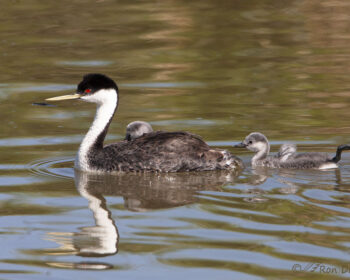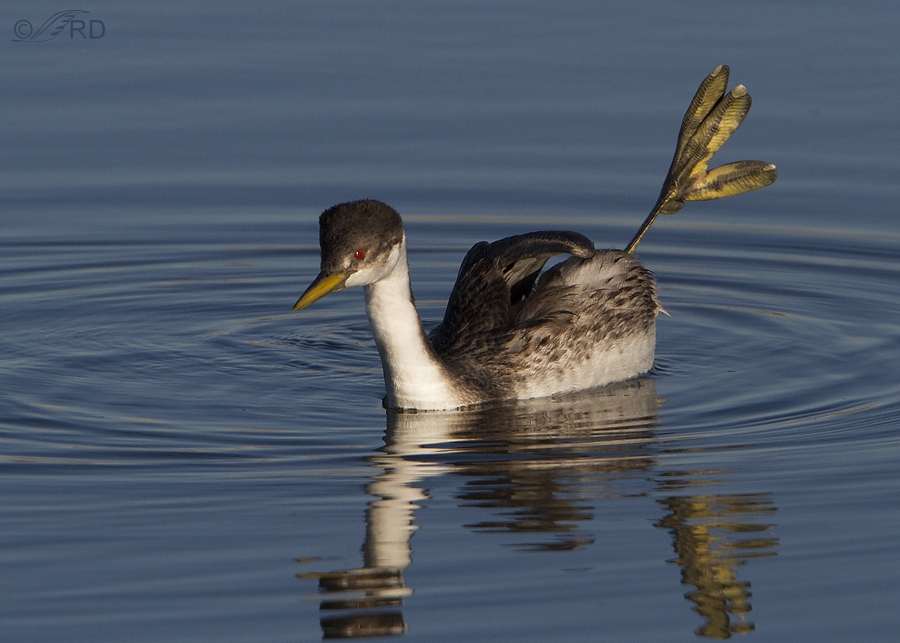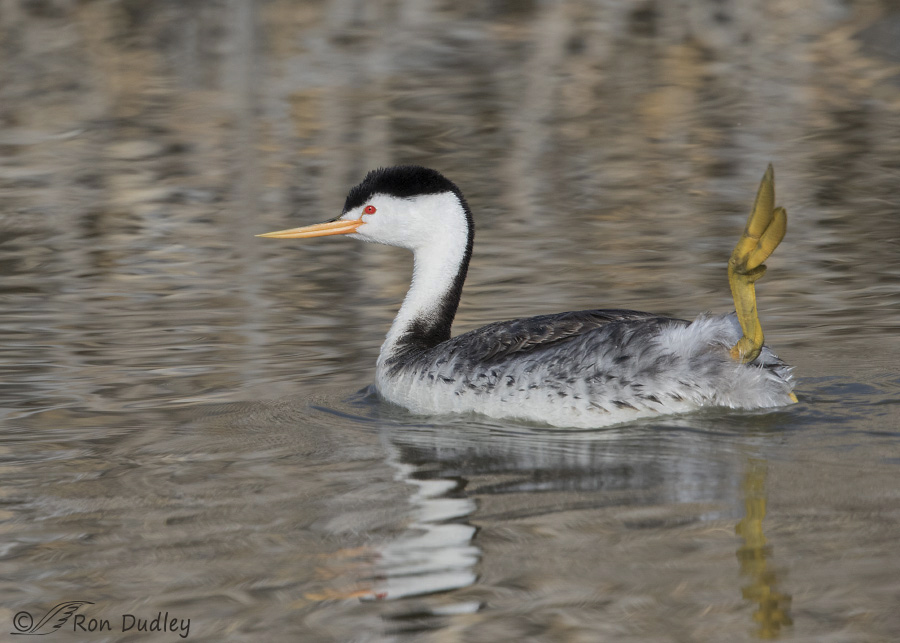Tag: foot-shipping
Western Grebes “Foot Shipping”
Clark’s Grebe – Drying Off That Foot
Western Grebes: A Bizarre Behavior Finally Explained
Anyone who has spent a significant amount of time observing Western Grebes (or their close relatives, Clark’s Grebes) has undoubtedly observed this curious behavior multiple times. But before I continue, a few words of explanation are in order. Grebes are unique to most other water birds in two ways that are related to this behavior: 1.) their legs are attached to their bodies at the rear, rather than underneath and 2.) the toes of grebes are lobed instead of webbed. Having legs attached at the rear allows for efficient swimming but causes extreme clumsiness while walking – they rarely venture on to land, but when they do they often fall down after just a few steps. This leg attachment position is so distinctive of grebes that the genus name of four of the North American grebe species is Podiceps (from “podicis” meaning anus or vent and “pes” meaning foot) – in other words, “anus foot”. (and yes, I’m having a hard time resisting a joke line or two with that phrase…) Recent experimental work with grebes has demonstrated that the lobes on the toes function much like the hydrofoil blades of a propeller. Ok, with that background, on to this strange behavioral quirk of the Western Grebe. Without warning, and for no apparent reason, they stick one of their legs out behind them. With those unusual feet it can look pretty silly. Sometimes they’ll do a simultaneous wing stretch, but rarely. Occasionally they’ll hold the foot high in the air for quite a while. That can look even sillier. Even the chicks do it….
Western Grebes “Foot Shipping”
Clark’s Grebe – Drying Off That Foot
Western Grebes: A Bizarre Behavior Finally Explained
Anyone who has spent a significant amount of time observing Western Grebes (or their close relatives, Clark’s Grebes) has undoubtedly observed this curious behavior multiple times. But before I continue, a few words of explanation are in order. Grebes are unique to most other water birds in two ways that are related to this behavior: 1.) their legs are attached to their bodies at the rear, rather than underneath and 2.) the toes of grebes are lobed instead of webbed. Having legs attached at the rear allows for efficient swimming but causes extreme clumsiness while walking – they rarely venture on to land, but when they do they often fall down after just a few steps. This leg attachment position is so distinctive of grebes that the genus name of four of the North American grebe species is Podiceps (from “podicis” meaning anus or vent and “pes” meaning foot) – in other words, “anus foot”. (and yes, I’m having a hard time resisting a joke line or two with that phrase…) Recent experimental work with grebes has demonstrated that the lobes on the toes function much like the hydrofoil blades of a propeller. Ok, with that background, on to this strange behavioral quirk of the Western Grebe. Without warning, and for no apparent reason, they stick one of their legs out behind them. With those unusual feet it can look pretty silly. Sometimes they’ll do a simultaneous wing stretch, but rarely. Occasionally they’ll hold the foot high in the air for quite a while. That can look even sillier. Even the chicks do it….




